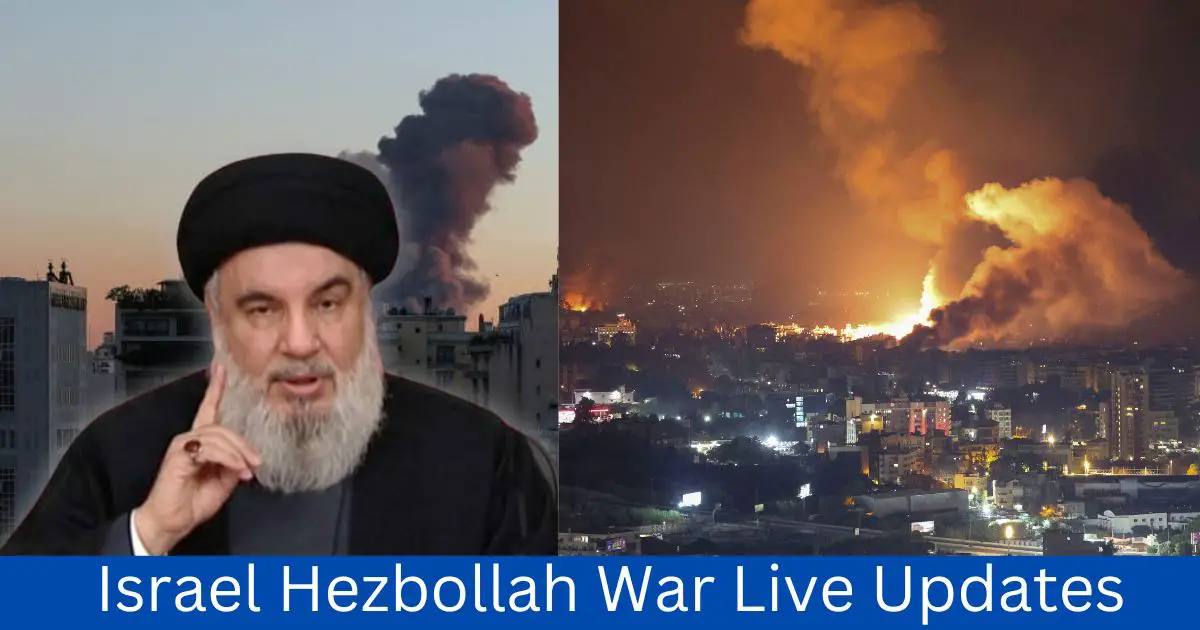This development has sent shockwaves through the region, prompting reactions from key players, including Iran, whose Supreme Leader, Ayatollah Ali Khamenei, has moved to a secure location amid escalating tensions. As the situation unfolds, it is crucial to understand the implications of these events on regional stability, international relations, and the humanitarian impact on civilians.
The Context of the Conflict
The animosity between Israel and Hezbollah is deeply rooted in historical, political, and ideological factors. Hezbollah, a Shiite militant group based in Lebanon, was formed in the early 1980s amid the Israeli invasion of Lebanon. Over the years, it has positioned itself as a significant player in the Lebanese political landscape, while also aligning itself closely with Iran, which provides substantial military and financial support.
Tensions have been mounting for years, particularly with the rise of Iranian influence in the region and Hezbollah’s involvement in the Syrian Civil War. The latest escalation began with a series of border skirmishes and rocket exchanges, leading to a full-scale conflict that has devastated the lives of countless civilians.
The Strike on Nasrallah
Israeli intelligence had long considered Hassan Nasrallah a primary target due to his leadership role in orchestrating attacks against Israel. Reports suggest that the recent airstrikes were meticulously planned, with Israeli defense officials indicating that they had received intelligence confirming Nasrallah’s location at the time of the strikes. The death of Nasrallah marks a significant shift in the balance of power within Hezbollah and could lead to a potential vacuum in leadership.
The implications of his death are multifaceted. On one hand, it could embolden Israeli forces, offering a momentary sense of victory in a long-standing conflict. On the other hand, it may provoke retaliatory strikes from Hezbollah or its allies, including Iran, further escalating an already volatile situation.
Khamenei’s Response
In the wake of Nasrallah’s death, reports surfaced that Iranian Supreme Leader Ayatollah Khamenei had been moved to a secure location. This precautionary measure underscores the heightened fears within Iranian leadership circles about potential Israeli reprisals or attempts to destabilize Iran’s influence in the region.
Khamenei’s response to this crisis will be crucial. He may rally regional allies, including Syrian President Bashar al-Assad and various militia groups in Iraq, to mount a coordinated response against Israel. Iran’s continued support for Hezbollah, coupled with Khamenei’s strategic maneuvering, will likely dictate the trajectory of this conflict.
International Reactions
The international community has been closely monitoring the situation, with various countries calling for restraint. The United Nations has expressed deep concern over the potential for a wider conflict, given the delicate balance of power in the Middle East. Nations like the United States and Russia may play critical roles in mediating the crisis, emphasizing the need for diplomatic channels to prevent further escalation.
While some Western nations have sided with Israel, citing its right to defend itself against aggression, others, particularly in the Arab world, have expressed solidarity with Hezbollah and condemned the strikes as acts of aggression. This divide highlights the complex nature of alliances in the region.
Humanitarian Concerns
As with any conflict, the humanitarian toll has been significant. The recent escalation has already led to civilian casualties and widespread displacement in southern Lebanon. Hospitals, schools, and homes have been caught in the crossfire, exacerbating an already dire humanitarian crisis.
Humanitarian organizations are struggling to provide aid to those affected, with borders closing and access to critical resources becoming increasingly limited. The international community must prioritize humanitarian access and support to alleviate the suffering of civilians caught in this conflict.
Potential Outcomes
The death of Nasrallah and Khamenei’s response could lead to several potential outcomes:
- Hezbollah’s Leadership Crisis: Nasrallah’s death may result in internal strife within Hezbollah, as factions vie for leadership and direction. This could weaken the group’s operational effectiveness but also spur hardliners to retaliate against Israel.
- Increased Iranian Involvement: Khamenei may escalate Iran’s military involvement in the region, leading to direct confrontations with Israeli forces. The potential for proxy wars across the Middle East is heightened, particularly in Syria and Iraq.
- Regional Destabilization: The conflict could destabilize Lebanon further, exacerbating sectarian tensions and complicating the political landscape. Neighboring countries may also be drawn into the fray, leading to a broader regional conflict.
- Calls for Ceasefire: In the face of increasing violence and humanitarian crises, there may be a push for ceasefire negotiations, mediated by international players. However, the success of such efforts will largely depend on the willingness of both Israel and Hezbollah to compromise.
Conclusion
The current phase of the Israel-Hezbollah war marks a significant escalation in a conflict that has deep historical roots. The killing of Hassan Nasrallah presents both an opportunity and a risk, with the potential for immediate Israeli gains counterbalanced by the likelihood of retaliation and broader conflict. As Khamenei moves to secure locations, the stakes have never been higher, and the region stands at a precarious crossroads. The world watches closely, hoping for a resolution that prioritizes peace and humanitarian needs amid the turmoil.

